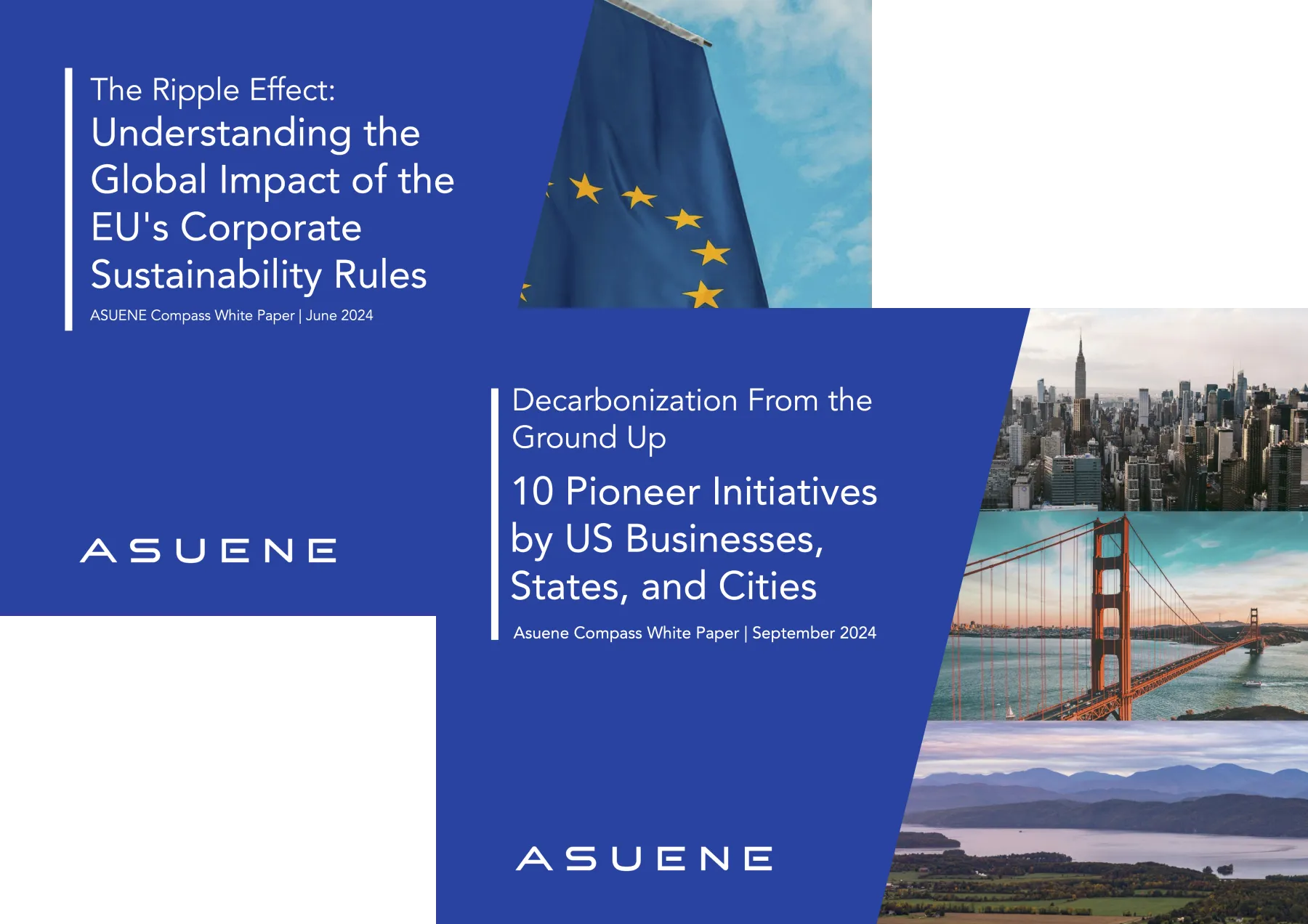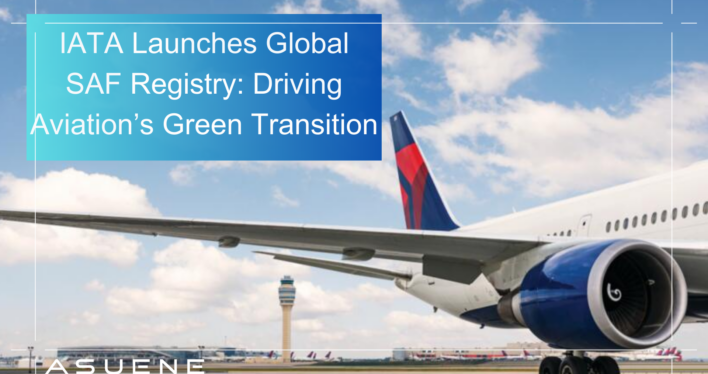- Article Summary
-
A Milestone for Decarbonization
On April 3, 2025, the International Air Transport Association (IATA) marked a pivotal moment in the aviation industry’s decarbonization journey by launching its long-awaited Global Sustainable Aviation Fuel (SAF) Registry. This system is not just a digital tool—it is a foundational infrastructure designed to facilitate, verify, and scale the use of SAF, a key enabler of aviation’s net-zero carbon target by 2050.
The SAF Registry offers a transparent and traceable system for SAF transactions and environmental attributes across multiple jurisdictions. It enables airlines, fuel producers, corporate buyers, and regulatory authorities to monitor and manage SAF usage without necessitating physical co-location of SAF supply and demand. By unbundling environmental attributes from physical fuel delivery, the system introduces much-needed flexibility and accountability to the SAF value chain.
SAF Adoption

Despite high ambitions, SAF deployment remains minimal. In 2024, only 0.3% of global aviation fuel consumption was SAF, and even under optimistic scenarios, this share is projected to reach merely 0.7% by 2025. This sluggish uptake is largely due to the price premium of SAF, which currently costs 2 to 5 times more than conventional jet fuel.
Such price differentials create a fundamental barrier, especially in an industry where margins are razor-thin. According to IATA, the average net profit margin for airlines in 2024 was just 3.6%, making widespread SAF adoption financially unsustainable without external support. IATA Chief Economist Marie Owens Thomsen emphasized that “a viable SAF market needs government policies similar to those that catalyzed the growth of wind and solar.”
Registry Mechanics
The SAF Registry allows SAF to be produced, uplifted, and used in one location, while the environmental benefit (or SAF credit) is allocated elsewhere. This book-and-claim model enables broader corporate participation, where companies not directly operating aircraft can still claim emissions reductions through SAF credit purchases.
Key functions of the SAF Registry include:
- Verification of SAF origin and sustainability attributes.
- Prevention of double counting, via unique credit issuance.
- Alignment with ICAO’s CORSIA (Carbon Offsetting and Reduction Scheme for International Aviation) and other regional frameworks.
- Support for Scope 3 emissions claims for non-airline stakeholders.
For corporate ESG managers, this system opens up new decarbonization pathways, particularly in addressing Scope 3 Category 6 (business travel) emissions. For airlines, it improves the credibility of climate disclosures and offsets.
Industry Support
IATA’s Registry launch is backed by a broad and influential coalition of early participants. These organizations span multiple sectors—aviation, energy, and technology—and their involvement signals a maturing ecosystem for SAF investment and demand aggregation.
Early Onboarding Participants:
| Sector | Organization Name |
|---|---|
| Airlines | American Airlines, Cathay Pacific, Delta Air Lines, Japan Airlines, KLM, Lufthansa, Qantas, Singapore Airlines |
| Energy Producers | ExxonMobil, Neste, World Energy, Gevo |
| Tech & Corporate | Microsoft, Google, DHL Global Forwarding, Bank of America, Boston Consulting Group |
| Others | Airbus, Shell Aviation, ITOCHU Corporation, ENOC |
These stakeholders are not only signaling confidence in SAF but also anchoring future demand. For instance, Microsoft and Google are among the first non-aviation companies to use the Registry to claim SAF-related Scope 3 reductions. This sets a precedent for ESG-conscious corporations seeking credible climate leadership in their supply chains.

Policy Advocacy
The Registry alone cannot bridge the cost and supply gap. IATA and its member airlines are urging governments to reallocate fossil fuel subsidies toward SAF production incentives. This includes tax credits, guaranteed offtake agreements, R&D support, and blending mandates—policy tools that have historically enabled the scaling of solar and wind power.
IATA’s Policy Recommendations:
- Redirect subsidies: Move funding from fossil fuel exploration to SAF infrastructure.
- Blending mandates: Require a minimum SAF content in aviation fuels.
- Investment de-risking: Offer guarantees or co-investment for SAF production facilities.
- Carbon pricing alignment: Ensure emissions trading schemes support rather than penalize SAF.
These policy measures are essential to build what Thomsen refers to as “a bridge between cost and climate ambition.” Without them, airlines may either scale back climate plans or pass costs to consumers—neither of which is ideal for long-term sustainability or equity.
Opportunities for Corporate Buyers
One of the most strategic aspects of the SAF Registry is how it integrates into corporate ESG reporting frameworks. For example, under the Greenhouse Gas Protocol, companies can address emissions from employee air travel (Scope 3 Category 6) by purchasing SAF credits via book-and-claim systems.
As scrutiny increases around double counting and greenwashing, the Registry offers verified SAF credits with transparent metadata. For ESG officers, this enhances the robustness of climate disclosures while contributing to real-world emissions reductions.

Corporate ESG Use Cases:
| Company | SAF Use Purpose |
|---|---|
| Microsoft | Scope 3 travel emissions reduction |
| DHL | Decarbonizing air freight logistics |
| Corporate climate neutrality goals | |
| Bank of America | Sustainable travel compensation |
This mechanism is poised to unlock private capital flows into SAF markets by allowing ESG-focused firms to participate financially—even if they do not operate aircraft.
Economic Impact
IATA’s own analysis suggests that if SAF costs remain unaddressed, the airline sector’s climate goals will stall. A forced scale-up under current price conditions would wipe out margins or lead to widespread fare increases. But with adequate public-private co-investment, the SAF market could expand from 0.3% today to 65%+ by 2050.
Moreover, SAF production stimulates local economies. Feedstocks such as waste oils, biomass, and even captured CO₂ could drive job creation across agricultural, refining, and logistics sectors—particularly in developing economies.
Conclusion
The SAF Registry is not just a tracking tool—it’s the institutional backbone of a future clean aviation economy. By enabling environmental transparency, creating new financial mechanisms, and opening the door for non-airline stakeholders, the Registry transforms SAF from a compliance burden into an opportunity for strategic alignment.
However, technology and markets alone won’t suffice. IATA’s message is clear: governments must act now, just as they did to mainstream wind and solar energy. For airlines, SAF represents both a cost and a commitment. For ESG leaders, it presents a rare chance to invest in one of the hardest-to-decarbonize sectors. And for policymakers, the Registry signals that the aviation industry is ready—if given the right tools—to fly clean.
Why Work with ASUENE Inc.?

ASUENE USA Inc., a subsidiary of Asuene Inc., is a key player in carbon accounting, offering a comprehensive platform that measures, reduces, and reports emissions, including Scope 1-3, with expertise in decarbonization. Asuene serves over 10,000 clients worldwide, providing an all-in-one solution that integrates GHG accounting, ESG supply chain management, a Carbon Credit exchange platform, and third-party verification.
ASUENE supports companies in achieving net-zero goals through advanced technology, consulting services, and an extensive network.
Download Our Expert Publications!

